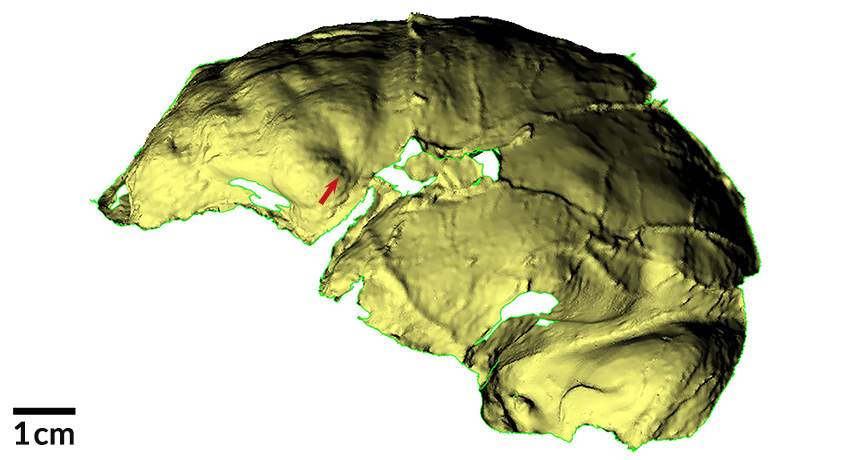
GO FOR BROCA A virtual cast of Homo naledi’s brain surface contains clues to the presence of a region (pointed to by red arrow) that may correspond to Broca’s area in present-day people. This language-related neural region enhanced social emotions and communication in the still-undated southern African Homo species, researchers contend.
Heather Garvin